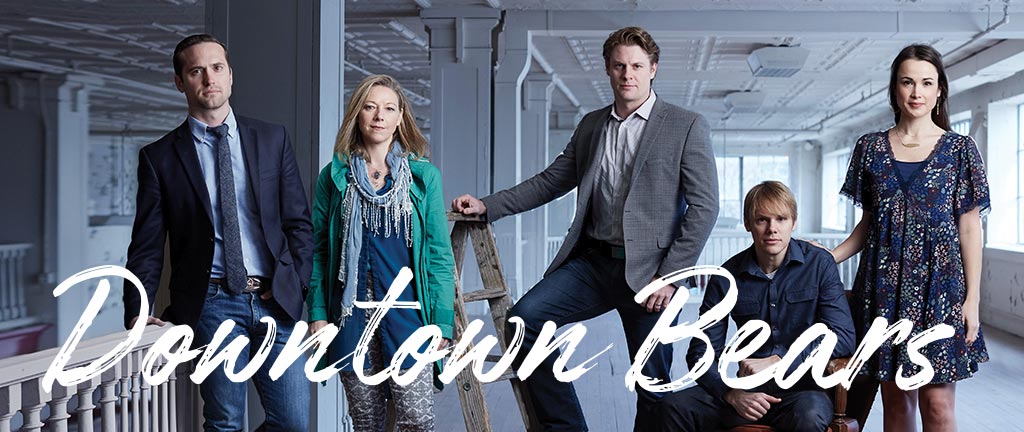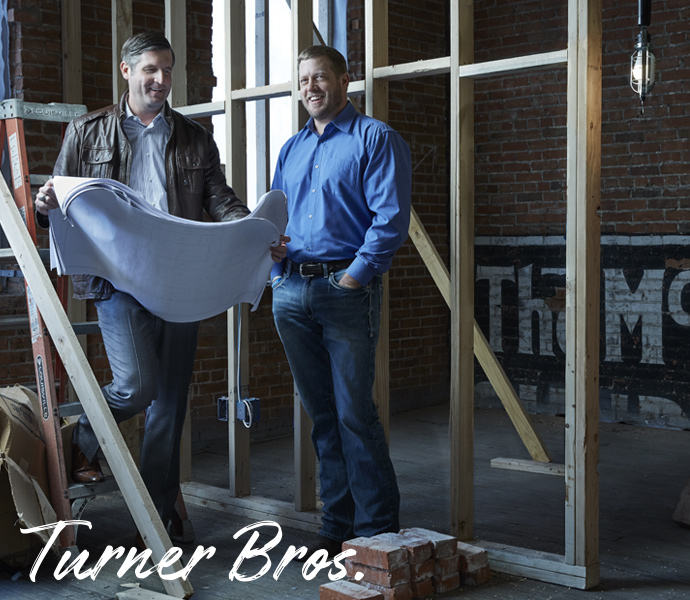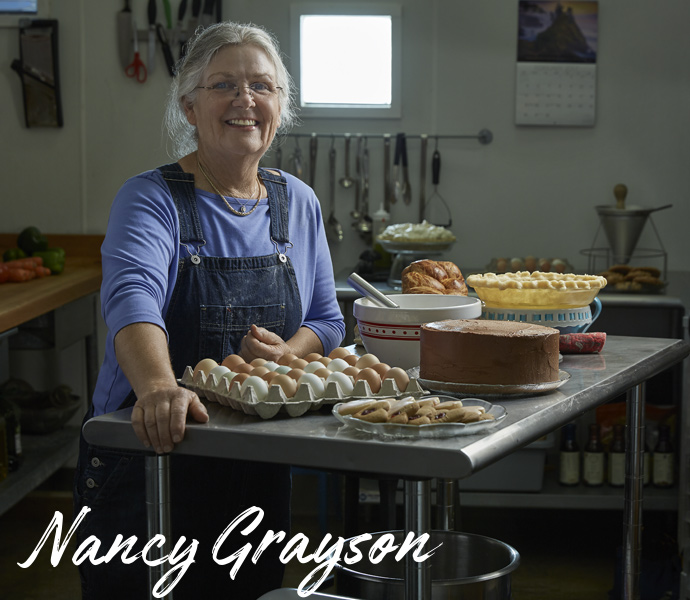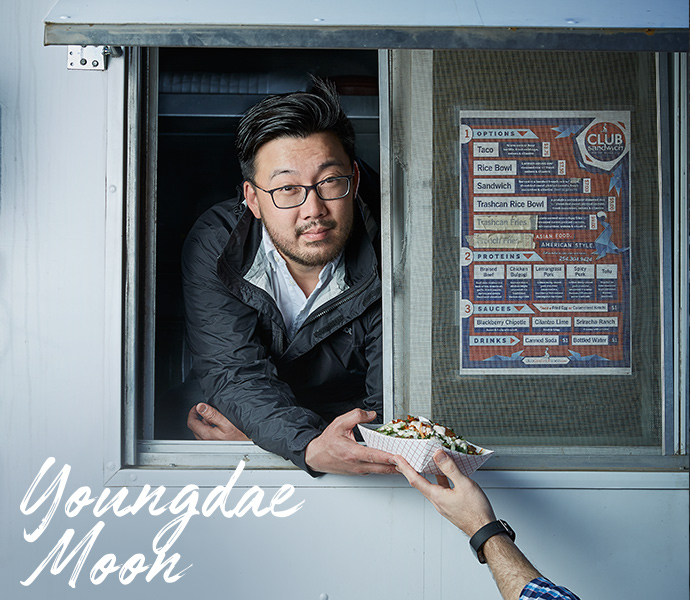Downtown Bears
Downtown Waco is experiencing a long-awaited renaissance, and Baylor alumni play key roles in revitalizing the heart of the city.

The Magnolia Effect
Millions of people nationwide tune in each week to watch the Waco-based television show Fixer Upper. That has the power to change perceptions. A single city block with no visitors three years ago has become inundated with 20,000 to 30,000 shoppers per week—many from out of state. That is an economic game-changer.
“It’s so much fun listening to people talk when they come back and they haven’t been here in years. Invariably, they say it’s a completely different place than what they remember,” Waco Convention and Visitors Bureau Tourism Manager Susan Morton says. “It's just—it’s alive now. Downtown is bustling, and it’s a whole different feeling.”
Morton reports that Waco tourism tripled from 658,844 visitors in 2015 to 1,968,361 in 2016. Waco leads Texas in hotel occupancy growth—up 19 percent—and ranks third in the state in occupancy rate. Four new hotels are being constructed this year. Realtor.com reports that, in 2016, the top four most-searched-for ZIP codes in the United States belonged to Waco and neighboring Woodway.
“On Fixer Upper, Chip and Joanna (Gaines, both Baylor graduates) seem to consistently share their love for the city, and it’s contagious,” Morton says. “Unlike many reality shows with indefinable locations, they make certain that you know that they’re in Waco.”
Magnolia Market’s 2015 opening at the silos on the corner of Webster Avenue and South 6th Street was an undeniable boon for downtown, but major changes were in process before that happened.
“Since downtown already had so much momentum, the Gaineses believed it was a great opportunity to put their business close to all the action,” Magnolia public relations director Brock Murphy, BBA ’03, says. “We love that other businesses have continued to open, which has made it that much more of a rich experience for everyone coming downtown.”
"It's so much fun listening to people talk when they come back and they haven't been here in years."
Major Change
During the day, people driving through Waco on Interstate 35 can clearly see the Baylor Research and Innovation Collaborative (BRIC), McLane Stadium, the Baylor campus and many new developments along the highway. At night, the I-35 access bridges produce a dazzling light display over the Brazos.
Drivers who had no intention of stopping are changing their minds, city manager Dale Fisseler says. “Now, they think about having a look around.”
According to Fisseler, the area has prioritized increasing and improving tourism as far back as the 1960s and ’70s with projects like the Texas Sports Hall of Fame, The Texas Ranger Museum and the Dr Pepper Museum. Those attractions—combined with Cameron Park and the zoo, the Waco Mammoth National Monument, the Brazos River, Lake Waco, a revitalized downtown and Baylor offerings—give people plenty of things to do in Waco.
“All of the projects that people have been working on for the last few decades are really starting to pay off,” Fisseler says.
Megan Henderson, one of several people who are heavily invested in the downtown area, is executive director of City Center Waco, a nonprofit created to accelerate and steer development.
“There’s a sense that in Waco, even you and I can help make things happen. You do not have that sense in Fort Worth or Austin; the time of making those cities was a long time ago,” Henderson says. “The time of making Waco is upon us, and the idea that you can make your own life and help make Waco at the same time is really exciting.”
She points out that of the approximately 111 blocks making up the downtown area, only about 10 are active, full and working. In this 5-square-mile area, Henderson says there are about four working districts right now.
“The newest is the Silo District, one of the centers of gravity. What will happen in the shortest term is that they will get bigger and start to bleed into each other,” she says.
Leah Stewart, BBA ’98, owner of The Olive Branch Bakery & Café since 2003, is a downtown veteran who has witnessed the growth firsthand.
“The biggest thing is people living downtown,” says Stewart, who lives in a neighborhood near Cameron Park. “There’s a lot more activity as far as all hours of the day, a lot more public transportation available, and parking is becoming an issue, which is a good problem to have.”
A Different Kind of Momentum
Across downtown, people recognize the momentum as something totally different.
“Waco is in this moment where we are going to be more prosperous in a minute than we are right now,” Henderson says. “So if we can increase engagement, if we can create among enough people an understanding of the process and how it works, then more people are plugged in and able to participate right now.”
McLane Stadium and the BRIC have been great catalyst projects that illustrate success in Waco is possible. Magnolia and Balcones (a growing local distillery), which have invested millions in downtown, have become national brands with legions of dedicated followers.
The next major piece of the downtown puzzle is the Brazos Promenade, a $100 million-plus riverfront development near Baylor’s Clifton Robinson Tower. Led by Dallas-based Catalyst Urban Development, groundbreaking will begin in a few months. The City of Waco has committed more than $20 million in TIF (tax increment financing) funds for the project.
Add key constituents from major entities meeting regularly and thinking strategically about downtown revitalization, with a significant number of small business owners and excited entrepreneurs, and it’s a recipe for real momentum.
“There is no question that there is more emphasis on collaboration today than there was five or 10 years ago. It’s a high priority for us,” says Dr. Kendall Artz, director of Baylor’s entrepreneurship program and chair of the entrepreneurship department. Artz sees energy and the resources being applied in the community to push forward with initiatives.
“People are finally stepping up to the plate to provide the resources to make these things happen, and I’m optimistic,” he says. “We have all these different initiatives targeting different groups. At the end of the day, we should see a lot more economic development in the city, particularly in the downtown area.”
Fisseler says the City of Waco is proud of its traditional economic development initiative and that Baylor’s progress over the past decade cannot be underestimated in the rejuvenation.
"There is no question that there is more emphasis on collaboration today than there was five or 10 years ago."
“It’s a pride thing,” Fisseler says, “and I think that helped jumpstart downtown. It makes a real difference for the city.”
Baylor/Waco: Proud Partners
There has been a significant effort in recent years to break down the barriers, open connectivity and have a regular, ongoing dialogue about how Waco and Baylor can work together, says Kris Collins, Greater Waco Chamber vice president of economic development. She believes Baylor parents who are also alumni would be surprised by the downtown renaissance.
In the past three years, leaders from the city and Baylor redoubled efforts to more intentionally support each other and continuously work together for strategic growth that would benefit common goals.
“We came up with a handful of goals,” says Ashley Bean Thornton, BA ’83, Baylor senior director of informed engagement and continuous improvement. “The big aspirations were: spurring business growth and investment, more intentionally connecting Waco to Baylor Nation, helping propel Prosper Waco [education, health and financial security] and ensuring Baylor is being a good neighbor in the neighborhoods around Baylor.”
Baylor Senior Vice President for Operations and CFO Reagan Ramsower, BBA’74, MS’76, says the engagement and collaborations between Baylor and Waco are at an all-time high.
“Baylor’s dependency on a thriving, successful and flourishing Waco to accomplish its mission is recognized across campus, and Waco’s support is vital to the Baylor community,” he says. “Attracting the best and brightest faculty, staff and students is significantly enhanced by the excitement Waco is providing.”
Among the initiatives resulting from those conversations are a free shuttle creating student connectivity between downtown and the university, bicycle lanes, safer pedestrian passage under I-35 and Prosper Waco’s CampusTown initiative.
“A big hit this past Labor Day weekend was the Brazos River Float for university students through downtown,” Collins says. “It was really about helping the university with some of its student retention efforts, and showcasing that Waco’s a cool place. The river is a great asset that right now is underutilized, but I think that that’s going to be changing.”
Relatively simple changes, such as exposing students to downtown businesses, helps tie Baylor and Waco together.
“Baylor is making a conscious effort to connect with downtown,” Stewart says. “In the last four or five years, Baylor has really concentrated on letting local businesses cater on campus. Many of them are locally owned by Baylor grads, and that’s really unique.”
Key stakeholders, including the City of Waco, McLennan County, Baylor, Waco Chamber and local foundations, are rallying around a new Waco entrepreneurship center, says city councilman Dillon Meek, BA ’07, JD ’10. One part of the vision is to have a Class-A co-working space that is aesthetically beautiful in downtown.
“The space will provide open working spaces and private offices, along with resources like mentorships, scholarships and access to capital,” Meek says. “The message we’re communicating is: If you want to start a business, Waco is the place to do it. We will rally around you and help you get the support you need to be successful.”
Evan Hebert, BA ’16, leads the CampusTown initiative through Prosper Waco, a non-profit entity whose mission is to provide Wacoans with improved education, health and financial security. Baylor and the City of Waco each pay half of Hebert’s salary.
“CampusTown is aimed at keeping students in Waco, so I connect students from Baylor, MCC and TSTC to local full-time jobs and internships,” Hebert says. “I get to work on the campuses and with the city, basically being almost like a middleman connecting employers to students.”
Hebert envisions more leisure and entertainment options on the downtown horizon, including more green space and intramural sports.
“Another challenge in all this is: How do we create enough jobs for the graduates of Baylor, MCC and TSTC who want to stay?” Fisseler says. “So, the City is deliberately working with Baylor to try to keep the students here that want to stay after graduation.”
Gib Reynolds, BBA ’12, is a young entrepreneur who returned to Waco after graduate school in Austin. Within Waco’s city limits, Reynolds started Urban Produce, a hydroponic lettuce farm that sells lettuce to 120 H-E-B stores. Reynolds also lectures in Baylor’s Hankamer School of Business. In his Accelerated Ventures program, Reynolds encourages Baylor students to consider staying in Waco after graduation.
“People in Waco want to build sustainable companies, but it’s not just about that,” Reynolds says. “I found a life of meaning, good business, good people, and I found a community here that’s all about that. I have 17 students in my class, and I want all 17 to stay. If there’s any time to be in Waco, it’s now, because you can be part of the shaping of it. We have huge talent in Waco, both entrepreneurial and technical, but most of it leaves town.”
Independent Bank Vice President Mitchell Horner, BBA ’01, mentored a group from Reynolds’ class and told the students that if 75 Baylor graduates stayed in Waco, it would completely change what happens here.
“On one hand, that’s not many—a fraction of a graduating class,” Reynolds says. “Which 75 are going to step up? That’s what I want to know.”
Collins says the goal is for Baylor students to fall in love with Waco and find an opportunity to stay.
“When students come to Baylor, we want to embrace them as a new member of the Waco community,” she says.
Long-term Health, Sustainable Growth
When Fisseler retired as Fort Worth city manager in 2010, he and his wife Linda, BSN ’81, returned to Waco, their hometown. Now, he sees parallels between the two cities he has served with downtown Fort Worth having experienced a complete transformation over a 10-to-15-year period.
“It was dramatic, and when I got to Waco in 2011, I saw the same thing happening: I see downtown taking off,” Fisseler says. “We’ve got people investing in downtown, making money, and that’s all it takes. I think there’s a huge parallel there. One big challenge is trying to respond to the growth, rethinking traffic designs, and trying to plan for it.”
Fisseler has seen development on virtually every downtown street on the west side of the Brazos, along with things happening on Elm Street on the east side of the river.
“When I got back to Waco, my goal was to see some things happen on Elm,” he says. “Things are happening there, along with Franklin, Washington, Webster, Mary, Clay—a lot is going on all over downtown.”
Fisseler says there is an economic development corporation where city and county work together with incentives for business to move to Waco, but the path toward attracting startup businesses is more complicated.
“Determining how to incentivize a startup company is difficult because you’re using public dollars, and if you have failures, then you’re going to get criticism,” he says. “But that’s what we ought to be looking at, in addition to bringing in traditional companies. Cities can’t afford to take big risks with taxpayer money, so it’s a big challenge. But with the BRIC and other entrepreneurial efforts, we’ve got all those kinds of opportunities. It’s a great time to be in Waco.”
Still, Waco’s city manager says planning for growth is quite the puzzle.
“How do you get all the good stuff from the cities without all the crime, traffic congestion, air quality problems, or water issues?” he says. “We want good quality of life without the spoils of growth, and that’s not easy.”
Other cities have tried and failed. Fisseler believes it’s all about smart growth and planning as much as possible for a sustainable community.
“I'm most excited about the fact that we’re having success in the core of the city,” he says. “People are really focused on quality of life improvements in Waco, which also encourages Baylor folks to stay here. I think Waco’s time is now. The potential—there’s no end to what it could be. The question is, what will it be, and how do you make it sustainable?”
Fisseler believes there is a great opportunity to positively affect Waco’s poverty population because of the good things that are happening, and connections between communities will provide more opportunity for long-term health.
City Center’s Henderson agrees.
“If you are a 20- or 30-something person trying to figure out how to make a life, to do so in a way that can be significant beyond your own self is exciting,” she says. “But if you’re a family that’s been here for generations, never improving your situation, this is the opportunity for your own curve to mimic Waco’s curve. I’m proud of Waco for taking head-on the issue of poverty and fairness.”
Henderson, who has worked in several other cities, says Waco has taken an uncommon approach by collectively believing that changes in the way of doing business can mean greater economic success and participation from a greater number of people. This is good for business, but it is also emotionally and morally good.
“Not many places are thoughtfully and intentionally engaging like that,” she says. “You’ve heard people say, ‘It’s not a diet; it’s a lifestyle.’ Waco’s not trying to fit into a prom dress. Waco is saying, ‘How can we be healthy forever?’”
"We want good quality of life without the spoils of growth, and that's not easy."
Henderson says what the city is attempting to do is worthy on many levels.
“If I’m somebody who used to live in Waco and now lives elsewhere, the complicated thing that I would want people to understand is that this is a reinvention,” she says. “This is not, Magnolia sprang up, and now we’ve got a bunch of new people, and the spinoff businesses that they are creating are really cool. This is so much more than that. This is a real reinvention, not of the city’s innate character, but of Waco’s health.”
Downtown Living More Popular Than Ever
Downtown Waco is a fun place to visit, but it also has become a popular place to live for people of all ages. Various styles of residential buildings are being built around downtown and near campus.
“People literally call us just to ask about moving to Waco,” CVB’s Morton says. “Parents who are in town to do other things take their kids to look at Baylor since they are already here. Tourists regularly come to visit and end up asking us about local realtors.”
Nearly five decades after then-newlywed Baylor students began life together in low-income housing, Joel and Diane Allison again call Waco home.
In 2014, the 1970 Baylor graduates purchased a small downtown condo for their frequent visits to Waco. The Allisons became more familiar with what downtown had to offer. To their family’s surprise, Diane decided Waco was where she wanted to be—even though they had always planned to move closer to their vacation home in Port Aransas.
“Diane said, ‘I want to move to Waco. I love this downtown living,’” Joel, a Baylor Regent, says. “I never thought she would say that. We’ve had a home with a yard, lots of maintenance. Now we can just lock up and travel, go see the grandkids. It’s very convenient.”
As the Allisons planned for Joel’s Feb. 1 transition out of his role as CEO of Baylor Scott & White Health, the couple sold their Dallas home and purchased a larger condo in Downtown Waco to accommodate visiting family. They moved in December 2016.
“Diane loves being able to walk to church [FBC Waco] and to all the great places to eat and shop,” Joel says. “We walk down to the river, to Baylor events, over to Cameron Park. It’s been great. There’s always some excitement within walking distance going on during the weekends.”
The Allisons say nearly all their neighbors in the 21-unit building are Baylor alumni, Baylor parents or both.
“One reason we like being here is because we both love Baylor,” Joel says. “We constantly run into and work with a lot of Baylor alumni. We’re so close to the university; it feels good.”
He also points out that Waco offers access to quality healthcare, which is important to retirees.
“Everyone is so nice and helpful. It has been a wonderful experience thus far,” Joel says. “Diane and I are very excited about downtown and feel blessed to be part of it. Waco is open for business.”
Times have indeed changed. Waco is cool. While City leaders are not discounting the value of that perception, they want the reality to be long-term health and sustainable growth—a place where all boats can rise.
Pictured above left to right: DILLON MEEK, BA ’07, JD ’10, General Counsel, City Councilman; FIONA BOND, MBA Candidate, Executive Director, Creative Waco; MARSHALL STEWMAN, MBA ’13, Developer; PETER ELLIS, BA ’05, Entrepreneur, Developer; SUMMER FEATHERSTONE ELLIS, BA ’04, Entrepreneur, Jewelry Designer. Pictured here in the five-story Stratton Building in downtown Waco, Peter and Summer Ellis plan to feature art gallery space, a basement-level pub, a coffee bar, and 27 loft-style apartments.


